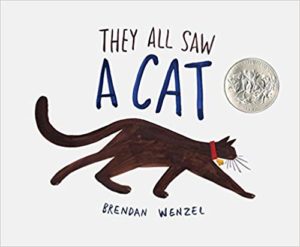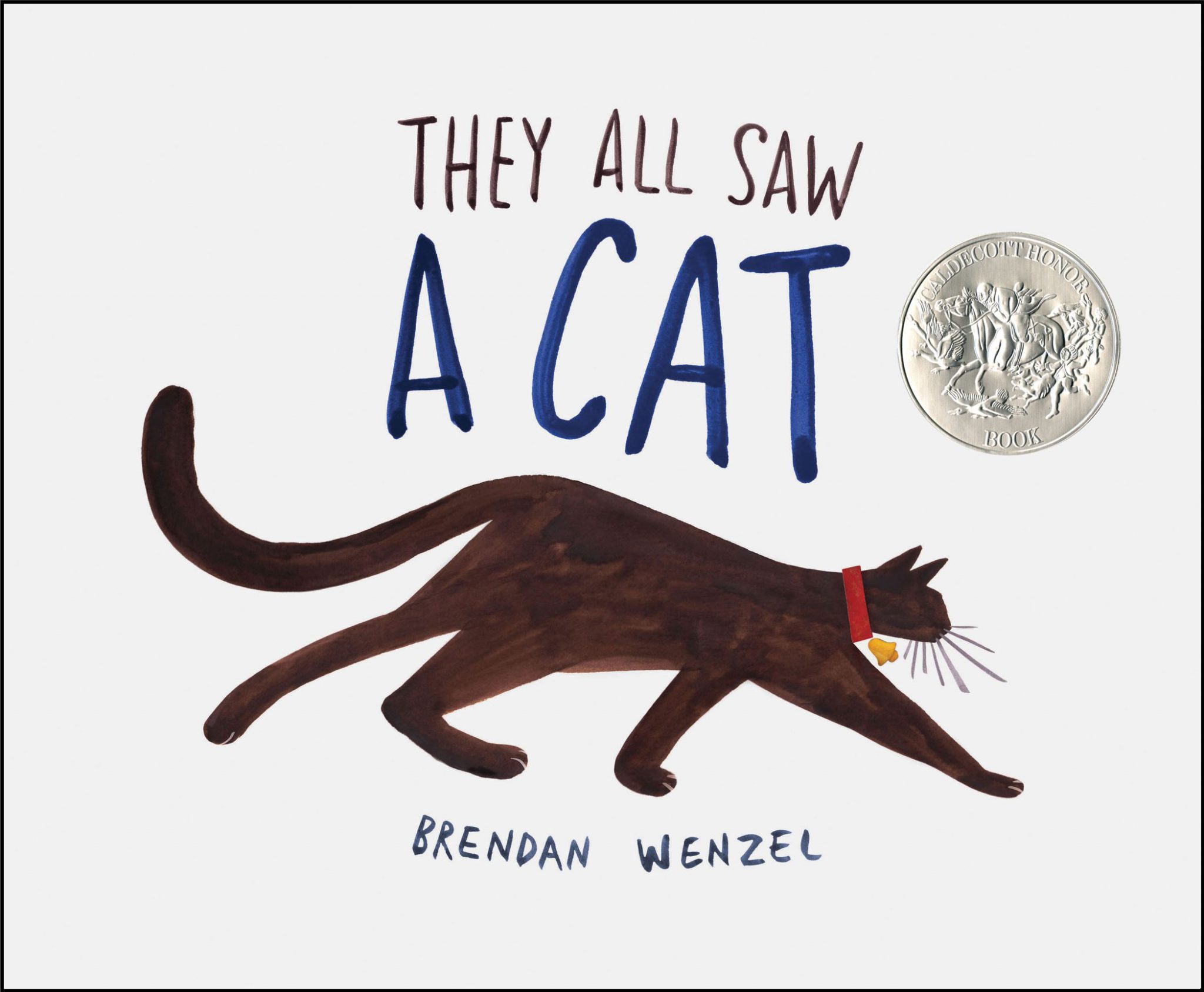

That’s because the cat looked totally different each time.

As I turned each page and we looked at the cat from each animals’ perspective, my son kept asking, “Mommy, what’s that?” as he pointed to the cat.

However, I noticed my 2.5 year-old son reacted much differently to the book than my almost 4 year-old daughter did. I absolutely loved this book and the kids seemed to enjoy it too. I also try to identify and label the emotions and then talk about why the character feels that way or how you know (he/she is smiling, he/she found their lost toy, he/she is crying, etc.) When reading books on the subject of perspective like They All Saw A Cat, I talk with the kids about the characters (or in this case – animals) and how they may be feeling in the book. Fortunately, the older kids get the more they learn to consider other people’s perspectives before they act or speak. Only then can they gain a better understanding of someone else’s motives or change their own behavior so they don’t offend others. It’s not until kids are older that they can begin to imagine a situation from someone else’s perspective. At a young age, children are often unable to put themselves in another person’s position and imagine what they would feel, think, or do if you were in that situation. Teaching small children about perspective can be tough. They don’t have the ability to take the perspective of someone else. This happens because babies don’t know that someone else’s discomfort is not their own. Have you ever seen 2 babies in a room and when one starts crying, the other starts crying too? Having kids born 15 months apart, I know this all too well. But while a child sees a cat that is soft and fluffy, a goldfish only sees terrible yellow eyes distorted by the lens of the fishbowl, a mouse mostly registers ferocious teeth and claws, and a bat sees a cat-shaped collection of white dots illuminating the dark.Įach animal’s vision of the cat is informed by a combination of proximity, physiology and emotion, in a quietly brilliant demonstration of the power of perception.

In this glorious celebration of observation, curiosity, and imagination, Brendan Wenzel’s simple, rhythmic prose and ingenious illustrations take readers on an imaginary walk alongside a cat. The cat walked through the world, with its whiskers, ears, and paws.


 0 kommentar(er)
0 kommentar(er)
